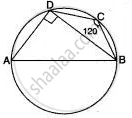Advertisements
Advertisements
प्रश्न
In the figure, ∠DBC = 58°. BD is a diameter of the circle. Calculate : ∠BDC
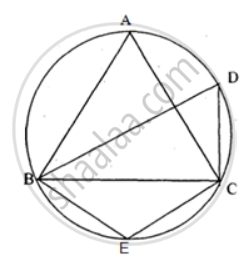
उत्तर
Given that BD is a diameter of the circle.
The angle in a semicircle is a right angle.
∴ ∠ BCD = 90°
Also given that ∠ DBC = 58°
In Δ BDC ,
∠ BCD + ∠ BCD + ∠ BDC = 180°
⇒ 58° + 90° + ∠ BDC = 180°
⇒ 148° + ∠ BDC = 180°
⇒ ∠ BDC = 180° - 148°
⇒ ∠ BDC = 32°
APPEARS IN
संबंधित प्रश्न
In a cyclic quadrilateral ABCD, the diagonal AC bisects the angle BCD. Prove that the diagonal BD is parallel to the tangent to the circle at point A.
In the given figure, ABCD is a cyclic quadrilateral. AF is drawn parallel to CB and DA is produced to point E. If ∠ADC = 92°, ∠FAE = 20°; determine ∠BCD. Give reason in support of your answer.

In the given figure, O is the centre of the circle. The tangents at B and D intersect each other at point P. If AB is parallel to CD and ∠ABC = 55°, find:
- ∠BOD
- ∠BPD
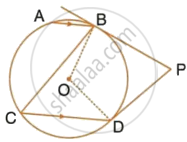
ABCD is a cyclic quadrilateral, AB and DC are produced to meet in E. Prove that ΔEBC ≅ ΔEDA.
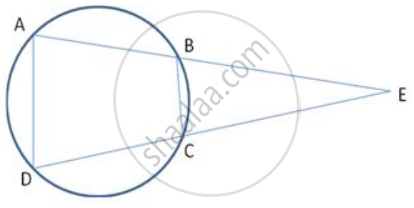
In the following figure, O is the centre of the circle. Find the values of a, b and c.

In the figure, ∠DBC = 58°. BD is a diameter of the circle. Calculate : ∠BEC
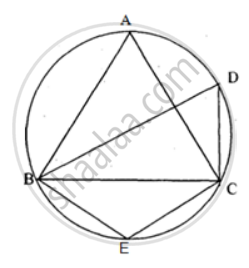
ABCD is a cyclic quadrilateral AB and DC are produced to meet in E. Prove that Δ EBC ∼ Δ EDA.
The diagonals of a cyclic quadrilateral are at right angles. Prove that the perpendicular from the point of their intersection on any side when produced backward bisects the opposite side.
In Fig. ABCD is a cyclic quadrilateral. A circle passing through A and B meets AD and BC in the points E and F respectively. Prove that EF || DC.

In the adjoining figure, AB is the diameter of the circle with centre O. If ∠BCD = 120°, calculate:
(i) ∠BAD (ii) ∠DBA
